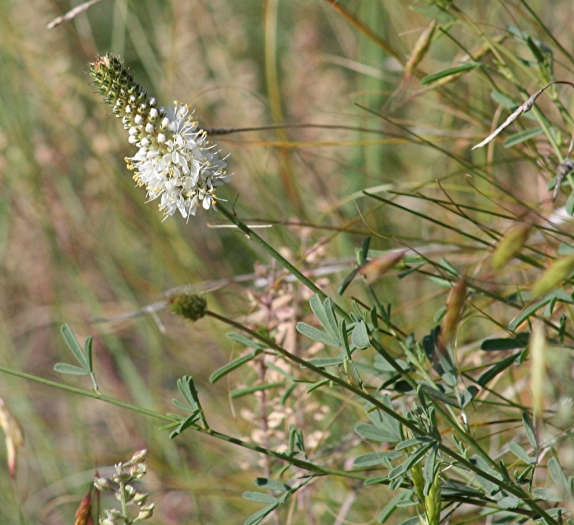White Prairie Clover
(Dalea candida)
White Prairie Clover (Dalea candida)
/
/

USDA NRCS Montana
Public Domain Mark 1.0



















































Estimated Native Range
Summary
White Prairie Clover is valued for its ability to attract pollinators and improve soil fertility by fixing nitrogen, a process facilitated by its classification as a "high" nitrogen fixer by the USDA. Its showy white flowers make it a favorite in native plant gardens, prairie restorations, and wildflower meadows. It thrives in full sun and is tolerant of various soil types, although it prefers those with slow to medium drainage. While it requires medium amounts of water, it is relatively drought-tolerant once established. Gardeners may use it as a ground cover or in border plantings for its ecological benefits and aesthetic appeal.CC BY-SA 4.0
Plant Description
- Plant Type: Subshrub, Herb
- Height: 1-2 feet
- Width: 0.8-1.5 feet
- Growth Rate: Moderate
- Flower Color: White
- Flowering Season: Spring, Summer
- Leaf Retention: Deciduous
Growth Requirements
- Sun: Full Sun
- Water: Medium
- Drainage: Slow, Medium
Common Uses
Bee Garden, Bird Garden, Butterfly Garden, Drought Tolerant, Edible*Disclaimer: Easyscape's listed plant edibility is for informational use. Always verify the safety and proper identification of any plant before consumption., Fragrant, Groundcover, Low Maintenance, Street Planting
Natural Habitat
Native to prairies and open woodlands across central North America
Other Names
Common Names: White Tassel-Flower, White Prairie-Clover, Slender White Prairie-Clover, White Tasselflower, Dalée Blanche, Slender White Prairieclover, White Prairieclover
Scientific Names: , Dalea candida, Petalostemon candidus, Petalostemon occidentale, Petalostemon candidum var. oligophyllus, Kuhnistera candida, Kuhnistera occidentalis, Petalostemon gracilis, Psoralea candida, Petalostemon candidum var. occidentalis
GBIF Accepted Name: Dalea candida Willd.